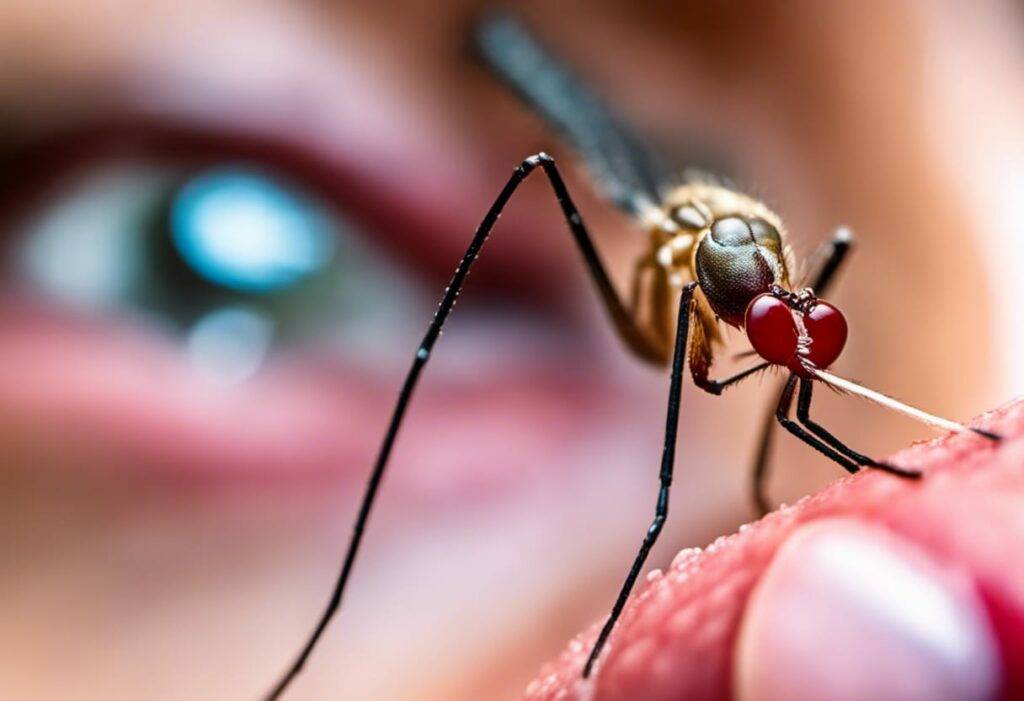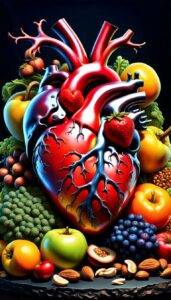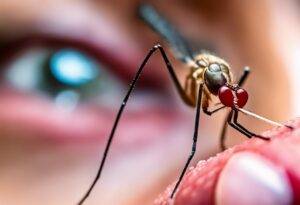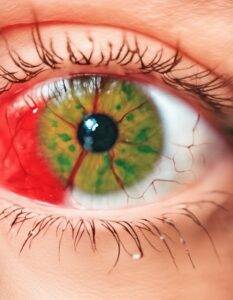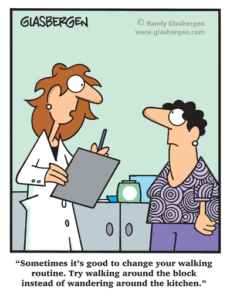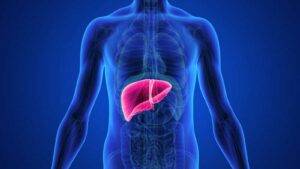Welcome to our comprehensive post on the most pressing questions and answers regarding infectious diseases. Whether you’re a curious layperson seeking knowledge or a pondering a passionate medical path specializing in this field, we have tailored this post to cater to your interests.
In this informative piece, we delve into various aspects that revolve around infectious diseases. We explore the intricate world of transmission and prevention methods, shedding light on how these diseases spread and providing valuable insights on how to protect yourself and others.
Furthermore, we discuss the latest scientific advancements that have revolutionized our understanding of infectious diseases. From breakthroughs in diagnostics to novel treatment approaches, we strive to keep you up-to-date with the cutting-edge developments in this ever-evolving field.
We also take a closer look at emerging diseases, keeping you informed about the latest threats and potential pandemics that require our immediate attention. Zoonotic diseases, those that can be transmitted between animals and humans, are another crucial aspect we tackle, offering a comprehensive understanding of their nature and prevention.
Taking into account the crucial role of vaccinations in combating infectious diseases, we discuss the vaccines that have had the greatest impact on public health. Exploring their effectiveness, potential side effects, and the science behind their development, we aim to provide you with a well-rounded perspective.
Respiratory infections, including those caused by both bacteria and viruses,also receive attention in our post. We go beyond symptoms and explore the underlying mechanisms of these infections, including their treatment options and preventive strategies.
Finally, we tackle the alarming issue of antimicrobial resistance, shedding light on its causes and implications. By addressing this pressing concern, we aim to raise awareness about the need for responsible antibiotic use and the development of alternative approaches to combat infectious diseases.
Dive into this detail-oriented post filled with engaging and informative answers that cater to a wide range of infectious disease topics. From the curious layperson to the aspiring specialist, we ensure that our content not only educates but captivates, instilling a lifelong passion for understanding and combating infectious diseases.
The Fundamentals of Infectious Diseases: Unveiling the 40 Greatest Queries and Solutions
1. How do infectious diseases spread, and what are the most effective preventive measures to mitigate their transmission?
Infectious diseases spread through various modes of transmission, including direct contact, respiratory droplets, contaminated food and water, vector-borne (e.g., mosquitoes), and sexual contact. To mitigate transmission, the most effective preventive measures include:
1. Practicing good hand hygiene by washing hands frequently with soap and water for at least 20 seconds, or using hand sanitizers.
2. Following respiratory hygiene, such as covering the mouth and nose with a tissue or elbow when coughing or sneezing.
3. Maintaining good personal hygiene, including regular bathing and cleaning of shared surfaces.
4. Avoiding close contact with individuals who are sick and maintaining a safe distance (at least six feet) from others.
5. Getting vaccinated against diseases that have available vaccines, as vaccines are a powerful tool to prevent infection.
6. Practicing safe food handling, including proper cooking and storage, and avoiding consumption of raw or undercooked meat or eggs.
7. Using barrier methods (e.g., condoms) to prevent sexually transmitted infections.
8. Implementing infection control measures in healthcare settings, including frequent disinfection of surfaces and adherence to appropriate isolation practices for infected patients.
By implementing these preventive measures consistently, the transmission of infectious diseases can be significantly reduced.
2. Which infectious diseases pose the greatest threat to public health globally, and what factors contribute to their prevalence?
Several infectious diseases pose significant threats to public health globally. These include:
1. Respiratory infections, such as influenza and COVID-19, due to their high transmission rates and potential for severe outcomes.
2. Human immunodeficiency virus (HIV) and acquired immunodeficiency syndrome (AIDS) due to their global impact on mortality and morbidity.
3. Tuberculosis (TB), which remains a leading cause of death worldwide, particularly in low-income countries.
4. Malaria, primarily prevalent in tropical and subtropical regions, causing high morbidity and mortality.
5. Hepatitis B and C, leading causes of liver disease and cancer globally.
6. Sexually transmitted infections, including gonorrhea, chlamydia, and syphilis.
Factors contributing to the prevalence of these diseases include inadequate access to healthcare, poor sanitation and hygiene, crowded living conditions, globalization and travel, antimicrobial resistance, and socioeconomic disparities. Timely diagnosis, effective treatment, vaccination programs, and public health interventions are crucial in combating these diseases.
3. Can you explain the concept of viral load and its significance in understanding the severity and transmission of infectious diseases?
Viral load refers to the amount of virus present in an infected individual’s blood, respiratory secretions, or other body fluids. It is an important indicator of both the severity of the disease and the potential for transmission.
In general, a higher viral load is often associated with more severe symptoms, as the virus may be actively replicating and causing widespread damage to the host. Individuals with high viral loads may be more likely to experience severe illness and complications.
Moreover, individuals with a high viral load are more likely to shed larger amounts of virus particles, increasing the risk of transmission to others. For example, in respiratory infections like COVID-19, individuals with high viral loads have been found to have higher viral shedding, making them more contagious.
Monitoring viral load levels can help healthcare providers determine the progression of the disease, guide treatment decisions, and assess the likelihood of transmission to others. It also informs infection control measures, such as isolation and quarantine protocols.
Just a little heads up: some of the links on this site may be affiliate links, which means if you make a purchase through them, we might get a little kickback. But don’t worry, it won’t cost you a cent extra! Think of it as the universe secretly thanking us for helping you find a great deal. Your support keeps the good vibes flowing.
4. How do scientific advancements, such as molecular diagnostic techniques, contribute to the timely and accurate identification of infectious diseases?
Scientific advancements, particularly in molecular diagnostic techniques, have revolutionized the identification of infectious diseases. Molecular diagnostics offer rapid and highly accurate methods for detecting the genetic material (DNA or RNA) of infectious agents. These techniques contribute to timely and accurate identification in several ways:
1. Speed: Molecular diagnostics can provide results within hours or even minutes compared to traditional culture-based methods, which often take days or weeks.
2. Sensitivity and Specificity: These techniques can detect very low levels of genetic material, increasing the chances of identifying the infectious agent even when present in small quantities. They also provide highly specific results, minimizing false positives and negatives.
3. Pathogen Detection: Molecular diagnostics can detect a wide range of pathogens, including bacteria, viruses, parasites, and fungi, enabling comprehensive testing for multiple infectious diseases simultaneously.
4. Early Detection of Outbreaks: The rapid identification of infectious agents using molecular diagnostics allows for early recognition of outbreaks, facilitating prompt public health interventions and containment measures.
5. Monitoring Antimicrobial Resistance: Molecular techniques help identify specific genetic markers associated with antimicrobial resistance, aiding in the prompt selection of appropriate treatment options.
Overall, molecular diagnostic techniques greatly enhance our ability to identify infectious diseases accurately, enabling timely interventions for patient management and public health responses.
5. Are there any emerging infectious diseases that researchers are currently monitoring closely, and what are the challenges in anticipating and managing them?
Yes, researchers are closely monitoring several emerging infectious diseases. Some notable examples include:
1. COVID-19: The ongoing pandemic caused by the SARS-CoV-2 virus. The challenges in managing COVID-19 include its rapid global spread, the need for effective vaccines and therapeutics, and the difficulty in implementing widespread public health measures.
2. Lassa fever: A viral hemorrhagic fever prevalent in West Africa. Challenges in managing Lassa fever include the lack of specific antiviral drugs, limited diagnostic capabilities, and the potential for nosocomial transmission in healthcare settings.
3. Zika virus: A mosquito-borne disease associated with birth defects. Anticipating and managing Zika virus involves vector control measures, comprehensive prenatal care, and public health campaigns to raise awareness about prevention, particularly in areas with high mosquito activity.
The challenges in anticipating and managing emerging infectious diseases stem from factors such as:
1. Zoonotic Origins: Many emerging diseases, including COVID-19 and Zika, originate from animals, making their early detection and containment challenging.
2. Global Travel and Trade: Increased globalization and travel facilitate the rapid spread of infectious agents across borders, making it difficult to contain outbreaks.
3. Limited Surveillance Systems: In certain regions, the lack of robust surveillance systems and diagnostic capacity can delay the identification and response to emerging diseases.
4. Scientific Discovery: The identification and characterization of novel pathogens require extensive research and diagnostic development, which may take time.
5. Public Health Infrastructure: Weak public health systems and inadequate resources in some regions may hinder control efforts.
To address these challenges, robust surveillance systems, timely communication between scientists, healthcare professionals, and policymakers, as well as international collaborations are crucial.
6. What role do zoonotic diseases play in the transmission of infectious diseases, and what precautions can individuals take to minimize the risk of cross-species infections?
Zoonotic diseases are infectious diseases that can be transmitted from animals to humans. They account for a significant proportion of emerging infectious diseases and pose a constant threat to global health. Examples include Ebola virus, avian influenza, and Lyme disease.
Cross-species transmission occurs when a pathogen jumps from one species to another, potentially leading to human infections. This transmission can happen through direct contact with infected animals, consumption of contaminated animal products, or exposure to environments where animals carry and shed pathogens.
To minimize the risk of cross-species infections, individuals can take the following precautions:
1. Avoid contact with wild or exotic animals, especially in areas where zoonotic diseases are prevalent.
2. Practice good hygiene, including regular handwashing after animal contact or handling animal products.
3. Ensure proper cooking of animal products, as thorough cooking kills many potential pathogens.
4. Use personal protective measures, such as gloves and masks, when handling or working closely with animals.
5. Stay updated on vaccinations recommended for specific zoonotic diseases, such as rabies or influenza.
6. Implement vector control measures, such as mosquito nets or insect repellents, to prevent diseases transmitted by vectors like mosquitoes.
By being aware of the risks associated with zoonotic diseases and taking appropriate precautions, individuals can significantly reduce the chances of cross-species infections.
7. How effective are vaccinations in preventing the spread of infectious diseases, and what are the consequences of vaccine hesitancy?
Vaccinations have been incredibly effective in preventing the spread of infectious diseases and reducing associated morbidity and mortality. Vaccines stimulate the immune system to recognize and remember specific pathogens, preventing infection or reducing the severity of the disease if infection occurs. The benefits of vaccinations include:
1. Disease Prevention: Vaccines protect individuals from acquiring vaccine-preventable diseases, such as measles, polio, or hepatitis B.
2. Herd Immunity: Widespread vaccination coverage creates herd immunity, which means a significant portion of the population becomes immune to the disease. This indirectly protects vulnerable individuals who cannot receive vaccines, such as those with compromised immune systems or infants.
3. Eradication: Vaccines have led to the eradication of diseases like smallpox and the near eradication of polio.
However, vaccine hesitancy poses significant challenges to public health. Vaccine hesitancy refers to the reluctance or refusal to vaccinate despite the availability of vaccines. Consequences of vaccine hesitancy include:
1. Outbreaks: Declining vaccination rates can lead to outbreaks of vaccine-preventable diseases, as demonstrated by recent measles outbreaks in several countries.
2. Increased Morbidity and Mortality: Without sufficient vaccine coverage, more individuals are susceptible to infectious diseases, resulting in increased disease burden, hospitalizations, and even deaths.
3. Erosion of Trust in Vaccines: Vaccine hesitancy can erode public trust in vaccines and undermine confidence in immunization programs, creating challenges for future disease prevention efforts.
To address vaccine hesitancy, it is crucial to ensure transparent and science-based communication about vaccine safety and efficacy, address concerns and misconceptions, and promote vaccine education campaigns to emphasize the benefits of immunization.
8. Can you outline the primary modes of transmission for respiratory infections, and what measures can individuals adopt to protect themselves and others?
Respiratory infections can spread through various modes of transmission, including:
1. Droplet Transmission: Respiratory droplets expelled when an infected individual talks, coughs, or sneezes can directly reach someone nearby (within six feet) and potentially infect them.
2. Airborne Transmission: Some respiratory infections, such as tuberculosis or measles, can remain suspended in the air for longer periods, allowing transmission over greater distances.
3. Contact Transmission: Touching surfaces contaminated with respiratory secretions and then touching the face can result in infection if the pathogens enter the body through the mouth, nose, or eyes.
To protect themselves and others from respiratory infections, individuals should adopt the following measures:
1. Practice good hand hygiene, including frequent handwashing with soap and water for at least20 seconds, or using hand sanitizers when soap is not available.
2. Follow respiratory hygiene, such as covering the mouth and nose with a tissue or elbow when coughing or sneezing.
3. Wear face masks, particularly in crowded settings or when social distancing is challenging, as masks help prevent the spread of respiratory droplets.
4. Maintain physical distance from others, keeping at least six feet of space, especially when in crowded places or around individuals with respiratory symptoms.
5. Avoid close contact with individuals who are sick or showing symptoms of respiratory infections.
6. Regularly clean and disinfect frequently-touched surfaces, such as doorknobs, cell phones, and tabletops.
7. Stay up to date with vaccinations for respiratory infections, such as influenza and pneumococcal vaccines.
By adopting these measures, individuals can significantly reduce the risk of contracting and spreading respiratory infections.
9. What are the key differences between bacterial and viral infections, and how does this impact diagnosis, treatment, and prevention strategies?
Bacterial and viral infections differ in their causative agents, treatment options, and prevention strategies. Understanding these differences is crucial for appropriate diagnosis, treatment, and prevention:
1. Causative Agents: Bacterial infections are caused by bacteria, while viral infections are caused by viruses. Bacteria are single-celled microorganisms, whereas viruses are infectious particles that need a host cell to replicate.
2. Diagnosis: Bacterial infections are typically diagnosed through laboratory tests, such as cultures or genetic analyses. Viral infections are diagnosed through various methods, including molecular diagnostic techniques or serological tests to detect antibodies.
3. Treatment: Bacterial infections are often treated with antibiotics, which kill or inhibit the growth of bacteria. Viral infections do not respond to antibiotics and are generally managed through supportive care, antiviral medications, or vaccines, when available.
4. Prevention Strategies: Bacterial infections can be prevented through vaccination, good hygiene practices, and appropriate use of antibiotics to prevent resistance. Viral infections, particularly those with available vaccines, can be prevented through vaccination, along with measures such as good hand hygiene, respiratory hygiene, and safe sex practices.
It is crucial to differentiate between bacterial and viral infections to ensure appropriate treatment and prevention strategies. In some cases, diagnostic tests may be needed to determine the cause of an infection when clinical symptoms alone are not definitive.
10. How do antimicrobial resistance and superbugs pose significant challenges in the treatment of infectious diseases, and what global efforts are underway to combat this issue?
Antimicrobial resistance (AMR) occurs when microorganisms, such as bacteria or fungi, evolve to resist the drugs designed to kill them. Superbugs refer to microorganisms that have become resistant to multiple antimicrobial agents, making them difficult to treat. AMR poses significant challenges in the treatment of infectious diseases for several reasons:
1. Limited Treatment Options: As microorganisms become resistant to commonly used antibiotics, the pool of effective treatment options declines, complicating patient management and increasing the risk of treatment failure.
2. Increased Morbidity and Mortality: Drug-resistant infections often result in prolonged illness, increased healthcare costs, and higher mortality rates. They can cause complications or limit the effectiveness of other medical interventions, such as surgeries or cancer treatments.
3. Spread of Resistance: AMR can easily spread within healthcare settings, community settings, and even across borders
11. Can you explain the process of contact tracing and its importance in containing and managing infectious disease outbreaks?
Contact tracing is a crucial tool in containing and managing infectious disease outbreaks. It involves identifying, monitoring, and supporting individuals who have come into contact with an infected person. The process begins by identifying and notifying individuals who have had close contact with the infected individual, typically defined as being within6 feet for a prolonged period. Once identified, these contacts are monitored for symptoms and may be tested for the disease.
Contact tracing is important for several reasons. Firstly, it helps to interrupt the transmission chain by identifying and isolating individuals who may be infected but asymptomatic. By isolating these individuals, the spread of the disease can be limited. Secondly, it enables early detection of new cases, which allows for prompt and appropriate medical interventions. Lastly, contact tracing provides valuable data on the patterns of disease transmission, which can inform public health strategies and interventions.
Just a little heads up: some of the links on this site may be affiliate links, which means if you make a purchase through them, we might get a little kickback. But don’t worry, it won’t cost you a cent extra! Think of it as the universe secretly thanking us for helping you find a great deal. Your support keeps the good vibes flowing.
12. How do international travel patterns and globalization contribute to the spread of infectious diseases, and what measures can be implemented to address this issue?
International travel patterns and globalization have greatly facilitated the spread of infectious diseases. People can travel across the globe in a matter of hours, making it easier for diseases to spread from one country to another. Additionally, globalization has led to increased trade, agriculture, and urbanization, creating environments conducive to the emergence and spread of infectious diseases.
To address this issue, measures can be implemented at various levels. At the individual level, travelers can be educated about preventive measures such as vaccination, hand hygiene, and safe food practices. At the national level, countries can establish robust surveillance systems to detect and respond to infectious diseases. International collaboration is also crucial in sharing information, coordinating responses, and implementing control measures. This includes initiatives like the Global Health Security Agenda and the World Health Organization’s International Health Regulations.
13. What lessons can we learn from historical pandemics and epidemics, and how have they shaped our understanding and response to infectious diseases today?
Historical pandemics and epidemics have provided valuable lessons that have shaped our understanding and response to infectious diseases today. The devastating impact of past outbreaks, such as the Black Death, Spanish flu, and HIV/AIDS, highlights the importance of preparedness, rapid response, and global cooperation.
Historical outbreaks have taught us the significance of early detection and containment measures. They have also emphasized the importance of robust surveillance systems, effective communication strategies, and public trust in public health interventions. Furthermore, past pandemics and epidemics have led to advancements in medical research, resulting in the development of vaccines, antiviral medications, and improved diagnostics.
14. How do vector-borne diseases, such as malaria and dengue fever, spread, and what strategies are effective in preventing and controlling their transmission?
Vector-borne diseases, such as malaria and dengue fever, are transmitted to humans through the bites of infected vectors, such as mosquitoes or ticks. These vectors act as carriers, transmitting the pathogens from infected individuals to new hosts.
Preventing and controlling the transmission of vector-borne diseases involves several strategies. Firstly, vector control measures aim to reduce the population of vectors through methods like insecticide-treated bed nets, indoor residual spraying, and environmental management. Secondly, personal protective measures, such as wearing long sleeves and using insect repellent, can reduce the risk of vector bites. Vaccination, where available, is also an effective strategy for preventing certain vector-borne diseases. Lastly, community engagement and education play a vital role in promoting behavioral changes and raising awareness about prevention measures.
15. Can you discuss the potential consequences of climate change on the prevalence and spread of infectious diseases?
Climate change has the potential to significantly impact the prevalence and spread of infectious diseases. Rising global temperatures, altered precipitation patterns, and changes in ecosystems can create favorable conditions for the proliferation of disease vectors and the survival of pathogens.
For example, mosquitoes that transmit diseases like malaria and dengue fever thrive in warm and humid environments. As temperatures increase, these vectors may expand their geographical range, exposing new populations to the diseases they carry. Additionally, changes in rainfall patterns can affect water availability and quality, influencing the breeding habitats of disease-carrying insects.
Climate change can also affect the transmission dynamics of waterborne and foodborne diseases. Extreme weather events, such as floods and droughts, can contaminate water sources and increase the risk of outbreaks. Changes in agricultural practices and food production systems may also impact food safety and lead to the emergence of new infectious diseases.
16. How does the immune response differ in individuals with weakened immune systems, and what can be done to protect them from infectious diseases?
Individuals with weakened immune systems, such as those with HIV/AIDS, organ transplant recipients, or individuals receiving immunosuppressive therapy, have an impaired ability to fight off infections. Their immune response may be compromised, making them more susceptible to infectious diseases and prone to more severe manifestations of these diseases.
To protect individuals with weakened immune systems from infectious diseases, several measures can be taken. Vaccination plays a crucial role in preventing infections, as it helps boost the immune response. In some cases, specialized vaccines may be recommended for individuals with weakened immune systems. Additionally, strict infection control practices, such as hand hygiene, respiratory etiquette, and safe food practices, can reduce the risk of exposure to pathogens. Regular monitoring, prompt diagnosis, and treatment of infections are also essential for individuals with weakened immune systems.
17. What innovative technologies are currently being developed to enhance the detection, treatment, and prevention of infectious diseases?
Several innovative technologies are being developed to enhance the detection, treatment, and prevention of infectious diseases. For example, rapid diagnostic tests using nucleic acid amplification techniques enable quick and accurate identification of pathogens. These tests can be performed at the point of care, reducing the time to diagnosis and enabling timely treatment.
Advancements in vaccine technology have also led to the development of novel vaccine platforms, such as mRNA vaccines. These vaccines have shown great promise in recent years, as demonstrated by their successful use in combating COVID-19.
Additionally, artificial intelligence and machine learning algorithms are being employed to analyze vast amounts of data, aiding in early disease detection, outbreak prediction, and response planning. Nanotechnology is also being explored for drug delivery systems and the development of antimicrobial coatings to prevent infections in healthcare settings.
18. Can you explain the role of genomics in studying infectious diseases, including the tracking of outbreaks and the development of targeted treatments?
Genomics plays a crucial role in studying infectious diseases, offering insights into disease transmission, pathogen evolution, and the development of targeted treatments. By sequencing the genomes of pathogens, researchers can track the spread of diseases and identify their sources. This is particularly valuable in outbreak investigations, where genomic sequencing allows for the identification of transmission chains and the source of infection.
Genomics also provides information about the genetic diversity of pathogens, helping researchers understand how they evolve and develop drug resistance. This knowledge is essential for the development of targeted treatments, as it enables the identification of specific genetic targets to combat the pathogens.
Furthermore, genomics can aid in vaccine development by providing information on the genetic makeup of pathogens, allowing for the selection of vaccine antigens that are more likely to be effective.
Just a little heads up: some of the links on this site may be affiliate links, which means if you make a purchase through them, we might get a little kickback. But don’t worry, it won’t cost you a cent extra! Think of it as the universe secretly thanking us for helping you find a great deal. Your support keeps the good vibes flowing.
19. How does the misuse and overuse of antibiotics contribute to the rise of drug-resistant organisms, and what strategies can be employed to promote responsible antimicrobial use?
The misuse and overuse of antibiotics play a significant role in the rise of drug-resistant organisms. When antibiotics are used inappropriately, such as for viral infections or when not completing the full course, it creates selective pressure on bacteria. This pressure favors the survival and proliferation of antibiotic-resistant strains, leading to the emergence of drug-resistant organisms.
To promote responsible antimicrobial use, several strategies can be employed. Firstly, healthcare providers need to adhere to evidence-based guidelines for prescribing antibiotics and ensure that they are only used when necessary. This includes appropriate diagnosis and identification of the causative pathogens. Public education campaigns can also raise awareness about the importance of using antibiotics as directed and the consequences of antimicrobial resistance.
In addition, surveillance and monitoring systems can track antibiotic use and resistance patterns, enabling targeted interventions and feedback to healthcare providers. Finally, implementing infection prevention and control measures, such as hand hygiene and vaccination, can reduce the need for antibiotics by preventing infections in the first place.
20. Are there any advancements in telemedicine that can improve access to infectious disease expertise in underserved areas or remote regions?
Yes, advancements in telemedicine have the potential to improve access to infectious disease expertise in underserved areas or remote regions. Telemedicine allows healthcare providers to remotely assess, diagnose, and treat patients through the use of telecommunications technology and digital tools.
In the field of infectious diseases, telemedicine can play a crucial role in providing remote consultations, guiding local healthcare providers in the management of infectious diseases. It enables the sharing of medical images, laboratory results, and patient data, facilitating accurate and timely diagnoses. Telemedicine can also be used to provide education and training to healthcare workers in underserved areas, equipping them with the knowledge and skills necessary to manage infectious diseases.
Furthermore, telemedicine can facilitate communication and collaboration among infectious disease specialists, allowing for timely consultations and sharing of expertise across different regions. This can enhance the overall capacity for infectious disease management and response, particularly in areas with limited resources or geographical barriers.
21. Can you discuss the potential impact of socioeconomic factors, such as poverty and inequality, on the prevalence and management of infectious diseases?
The potential impact of socioeconomic factors, such as poverty and inequality, on the prevalence and management of infectious diseases is significant. Individuals living in poverty often face inadequate housing, sanitation, and hygiene conditions, which increases their susceptibility to infectious diseases. Limited access to healthcare services and preventive measures also contribute to higher disease burden in impoverished communities. Inequality further exacerbates the situation, as marginalized populations may face discrimination, lack of education, and decreased healthcare access. These factors create barriers to early detection, timely treatment, and prevention strategies, leading to higher infection rates and poorer disease outcomes. Addressing socioeconomic factors and promoting equitable access to healthcare and resources are essential for effectively managing infectious diseases in all populations.
22. How do infectious diseases affect vulnerable populations, including the elderly, pregnant women, and individuals with preexisting medical conditions?
Vulnerable populations, including the elderly, pregnant women, and individuals with preexisting medical conditions, are at a higher risk and may experience more severe consequences from infectious diseases. As people age, their immune system weakens, making them more susceptible to infections and less responsive to vaccines. Pregnant women experience changes in their immune system, making them prone to certain infections, such as influenza, and increasing the risk of adverse outcomes for both the mother and the unborn child. Individuals with preexisting medical conditions, such as diabetes or heart disease, often have compromised immune systems, making it harder for them to fight off infections and increasing the likelihood of severe complications. Special attention, preventive measures, and targeted interventions should be implemented to protect these vulnerable populations from infectious diseases.
23. Can you explain the concept of herd immunity and its role in protecting populations from infectious diseases?
Herd immunity is a critical concept in protecting populations from infectious diseases. It occurs when a significant proportion of the population becomes immune to a particular infection, whether through vaccination or prior infection. When enough individuals are immune, the spread of the disease is limited, as there are fewer susceptible individuals for the pathogen to infect. This indirectly protects those who cannot be vaccinated or are more vulnerable, such as newborns or individuals with compromised immune systems. Herd immunity can be achieved through widespread vaccination programs or natural infection, but vaccine-induced immunity is the safest and most effective way to achieve this. The threshold required for herd immunity varies depending on the infectious agent, but typically ranges from 70% to 95%.
24. What precautions should pregnant individuals take to minimize the risk of contracting infectious diseases and protect the health of their unborn child?
Pregnant individuals should take several precautions to minimize the risk of contracting infectious diseases and protect the health of their unborn child. They should practice good hand hygiene by washing hands frequently with soap and water or using hand sanitizers. Avoiding close contact with individuals who are sick, especially those with respiratory infections, is crucial. Pregnant women should also keep their vaccinations up to date, including influenza and pertussis vaccines, as they are at higher risk for severe complications from these infections. It is advisable to avoid travel to areas with high infectious disease burden and practice safe food handling and preparation to prevent foodborne illnesses. Regular prenatal check-ups with healthcare providers are essential to monitor and address any potential infectious disease risks.
25. Can you provide an overview of the relationship between nutrition and the immune system, and how diet impacts susceptibility to infectious diseases?
Nutrition plays a crucial role in the immune system’s function and susceptibility to infectious diseases. Adequate nutrition supports a healthy immune response, while malnutrition weakens the immune system, making individuals more susceptible to infections. Nutrient deficiencies, such as vitamin A, vitamin C, vitamin D, zinc, and selenium, can impair immune function and increase the risk of infections. A balanced diet rich in fruits, vegetables, whole grains, lean proteins, and healthy fats provides essential nutrients for a strong immune system. Additionally, maintaining a healthy body weight and avoiding excessive consumption of processed foods, sugary beverages, and unhealthy fats is important for overall immune health. It is important to note that while a nutritious diet can enhance immune function, it does not guarantee immunity against specific infectious diseases, and vaccination remains a crucial preventive measure.
26. How can individuals differentiate between mild symptoms of infectious diseases and indicators of more severe complications, and when should they seek medical attention?
Differentiating between mild symptoms of infectious diseases and indicators of more severe complications can be challenging, but certain signs warrant medical attention. Mild symptoms typically include fatigue, mild fever, sore throat, runny nose, or mild cough. However, if symptoms worsen or persist, it is important to seek medical attention. Warning signs of severe complications may include high or persistent fever, difficulty breathing or shortness of breath, chest pain, confusion, severe headache, persistent vomiting, or signs of dehydration. Additionally, individuals with preexisting medical conditions, compromised immune systems, or who fall within vulnerable populations, should seek medical advice promptly upon experiencing even mild symptoms. Timely medical evaluation is crucial to determine the appropriate course of treatment and prevent potential complications.
27. What are the major challenges in developing effective vaccines for rapidly evolving viral diseases, and how can these obstacles be overcome?
Developing effective vaccines for rapidly evolving viral diseases presents significant challenges. Viruses, such as influenza or coronaviruses, can undergo genetic mutations, leading to the emergence of new strains with different characteristics. These mutations can impact the efficacy of existing vaccines, requiring frequent updates or the development of new vaccine formulations. Additionally, the lengthy process of vaccine development, from research to clinical trials and regulatory approvals, may lag behind the pace of the viral spread. Adequate funding, research collaborations, and advanced technologies are necessary to overcome these challenges. Newer vaccine platforms, such as mRNA vaccines, have shown promise in rapidly responding to emerging viral diseases. Building flexible vaccine manufacturing capacities and strengthening surveillance systems to monitor viral evolution are other crucial steps in addressing this challenge.
28. Can you explain the concept of “long COVID” and why some individuals experience prolonged symptoms after recovering from certain infectious diseases?
“Long COVID” refers to the phenomenon where individuals experience prolonged symptoms after recovering from certain infectious diseases, particularly COVID-19. While most individuals with COVID-19 recover within a few weeks, some continue to experience persistent symptoms for months. Common long COVID symptoms include fatigue, shortness of breath, cough, joint pain, chest pain, brain fog, and depression. The exact cause and mechanism behind long COVID are still under investigation, but it is believed to involve a combination of viral persistence, immune dysregulation, and long-term effects on various organs. Research suggests that even individuals with milder initial infections can develop long COVID. The condition can significantly impact daily functioning and quality of life. Continued research is crucial to better understand, diagnose, and develop management strategies for long COVID, while effective vaccines and preventive measures remain key in reducing its incidence.
29. How does the prevalence of antibiotic-resistant bacteria in food products impact human health, and what measures can consumers take to minimize their exposure?
The prevalence of antibiotic-resistant bacteria in food products poses significant risks to human health. Antibiotic-resistant bacteria can be transmitted to humans through contaminated food, leading to serious infections that are challenging to treat. Consumption of such foods can contribute to the spread of resistant bacteria in the human population. Antibiotic-resistant bacteria can also transfer their resistance genes to other bacteria, potentially creating new strains resistant to multiple antibiotics. Prevention and control measures are necessary throughout the food production chain, including monitoring antibiotic use in agriculture, promoting good hygiene practices during food processing and preparation, and implementing effective surveillance systems. Individuals can minimize their exposure by practicing good food safety habits, such as thorough cooking of meat, proper storage and handling of perishable foods, and choosing products from reputable sources.
30. Can you discuss the risks associated with self-medication for infectious diseases and the importance of appropriate medical supervision and treatment?
Self-medication for infectious diseases poses significant risks, and appropriate medical supervision and treatment are essential. Misuse or overuse of antibiotics, antivirals, or other medications can lead to adverse effects, mask underlying conditions, and contribute to the development of antimicrobial resistance. Self-diagnosis may not always be accurate, as many infectious diseases share similar symptoms. Seeking proper medical evaluation allows healthcare professionals to accurately diagnose the underlying cause and provide targeted treatment. It also ensures appropriate dosing, duration, and monitoring of medications, taking into account individual factors such as age, medical history, and potential drug interactions. Additionally, healthcare providers play a vital role in educating patients about infection prevention, antimicrobial stewardship, and the importance of completing prescribed treatments. Collaborative efforts between healthcare professionals and patients are crucial for optimal management of infectious diseases and reducing the risks associated with self-medication.
Just a little heads up: some of the links on this site may be affiliate links, which means if you make a purchase through them, we might get a little kickback. But don’t worry, it won’t cost you a cent extra! Think of it as the universe secretly thanking us for helping you find a great deal. Your support keeps the good vibes flowing.
31. What role do public health campaigns play in raising awareness about infectious diseases, and how can individuals actively contribute to these initiatives?
Public health campaigns play a crucial role in raising awareness about infectious diseases by providing accurate information, promoting preventive measures, and debunking myths or misconceptions. These campaigns aim to educate individuals and empower them to take active steps to protect themselves and their communities. Individuals can contribute to these initiatives by actively engaging in the dissemination of accurate information through social media, sharing resources, and participating in community education programs. They can also support public health campaigns by following recommended preventive measures, such as practicing good hygiene, getting vaccinated, and seeking timely medical attention when necessary.
32. Can you outline the process of clinical trials for new treatments or vaccines against infectious diseases, including the ethical considerations involved?
The process of clinical trials for new treatments or vaccines against infectious diseases involves several stages to ensure safety, efficacy, and ethical considerations. Initially, laboratory studies and animal testing are conducted to assess the potential effectiveness of the intervention. If promising results are obtained, the intervention moves into clinical trials involving human participants. Clinical trials are divided into three phases: Phase 1 evaluates safety and dosage, Phase 2 assesses efficacy and side effects in a larger group, and Phase 3 involves a larger number of participants to confirm effectiveness and monitor adverse reactions.
Ethical considerations during clinical trials include obtaining informed consent from participants, ensuring their safety throughout the trial, maintaining confidentiality, and minimizing any unnecessary risks. Institutional review boards, ethics committees, and regulatory authorities review and oversee the entire process to ensure the rights and well-being of participants are protected.
33. How do socio-cultural factors influence healthcare-seeking behavior during infectious disease outbreaks, and how can health systems address these challenges?
Socio-cultural factors significantly influence healthcare-seeking behavior during infectious disease outbreaks. These factors may include cultural beliefs, norms, perceptions, and access to healthcare resources. Different cultures may have various understandings of illness, including its causes and treatments, which can impact individuals’ decisions to seek healthcare. Language barriers, trust issues, stigma, and cultural practices also influence healthcare-seeking behavior.
Health systems can address these challenges by adopting culturally sensitive approaches to healthcare delivery. Health education programs should consider cultural beliefs and practices and communicate in a manner that resonates with the community. Engaging community leaders, cultural influencers, and translators can help bridge language and cultural gaps. Additionally, providing easily accessible and affordable healthcare services can reduce barriers to seeking care during infectious disease outbreaks.
34. Can you provide insights into the psychological impact of infectious diseases on individuals and communities, and what mental health support should be available?
Infectious diseases have various psychological impacts on individuals and communities. Fear, anxiety, confusion, and grief are common emotional responses during outbreaks. Individuals may experience symptoms of post-traumatic stress disorder (PTSD), depression, and other mental health disorders due to the traumatic nature of the disease’s impact. Communities may also face social stigma and discrimination, leading to further psychological distress.
Mental health support should be an integral part of the response to infectious diseases. Psychosocial support services, including counseling, support groups, and hotlines, should be readily available. Healthcare providers should be trained to recognize and address mental health issues associated with infectious diseases. Public health campaigns should also highlight the importance of mental health and promote self-care practices to mitigate psychological impacts.
35. What measures can individuals take to protect themselves and their families during an infectious disease outbreak, especially when conflicting information or misinformation is present?
During an infectious disease outbreak, individuals can take several measures to protect themselves and their families, especially when conflicting information or misinformation is present. Firstly, individuals should rely on trustworthy sources of information, such as reputable health organizations and government agencies, for accurate and up-to-date information. They should follow recommended preventive measures, including regular handwashing, wearing masks, practicing social distancing, and getting vaccinated when available.
It is essential to critically evaluate information before sharing it with others, ensuring it comes from reliable sources. Fact-checking platforms can help verify the accuracy of information. Engaging in open and respectful conversations about the outbreak with family, friends, and colleagues can also help disseminate accurate information and address any concerns or misunderstandings within the community.
36. Can you discuss the role of community engagement and trust-building in effectively controlling and managing infectious disease outbreaks?
Community engagement and trust-building are vital in effectively controlling and managing infectious disease outbreaks. When communities are actively involved in outbreak response, they become more receptive to public health messages and guidelines. Community engagement can include collaboration with community leaders, organizations, and influential individuals to disseminate accurate information, address concerns, and promote preventive measures.
Trust-building is crucial for effective communication and cooperation between healthcare providers, public health officials, and community members. Transparent and honest communication, timely sharing of information, and involving community representatives in decision-making processes foster trust. Empowering communities to actively participate in outbreak response efforts through volunteer programs, task forces, and community-led initiatives can strengthen their sense of ownership and commitment.
37. How do infectious diseases affect the economy and healthcare systems, and what strategies can be implemented to mitigate these impacts?
Infectious diseases can significantly impact the economy and healthcare systems. Direct costs include medical expenses for diagnosis, treatment, and hospitalizations, while indirect costs result from loss of productivity and income due to illness or death. Healthcare systems bear the burden of increased demand for services, strain on resources, and a potentially overwhelmed workforce.
To mitigate these impacts, strategies can be implemented at various levels. Investing in prevention, surveillance, and early detection can help reduce the burden on healthcare systems. Strengthening healthcare infrastructure and ensuring adequate resources, including healthcare personnel and supplies, is crucial. Economic support programs, such as compensation for lost wages during quarantine or isolation, can alleviate financial burdens for individuals and support adherence to public health measures. International collaborations and resource-sharing can also help alleviate the strain on healthcare systems in resource-limited settings.
38. Can you provide an overview of the climate-related infectious diseases that are prevalent in specific geographic regions, and how can communities adapt to these challenges?
Climate-related infectious diseases are prevalent in specific geographic regions due to favorable environmental conditions for disease transmission. Examples of such diseases include malaria in tropical regions, dengue fever in subtropical and tropical areas, and Lyme disease in temperate regions with suitable tick habitats.
Communities can adapt to these challenges by implementing appropriate preventive measures. This may include vector control strategies, such as mosquito nets, insect repellents, and elimination of breeding sites. Educational campaigns should raise awareness about the risks associated with climate-related infectious diseases and promote behavior changes that reduce exposure. Health systems should be prepared to detect and respond to outbreaks effectively, including early diagnosis, adequate treatment, and surveillance systems to monitor disease trends.
Just a little heads up: some of the links on this site may be affiliate links, which means if you make a purchase through them, we might get a little kickback. But don’t worry, it won’t cost you a cent extra! Think of it as the universe secretly thanking us for helping you find a great deal. Your support keeps the good vibes flowing.
39. What research is currently underway to develop novel therapies or interventions for infectious diseases, and how can individuals stay informed about these advancements?
Research is continuously underway to develop novel therapies or interventions for infectious diseases. This includes the development of new antibiotics, antiviral drugs, vaccines, and innovative diagnostic tools. Individuals can stay informed about these advancements by engaging with reputable sources such as scientific journals, government health agencies, and academic research centers. Following updates from international health organizations and attending scientific conferences and webinars can also provide valuable insights into ongoing research in the field of infectious diseases.
40. Can you explain the concept of syndromic surveillance and its applications in early detection and response to infectious disease outbreaks?
Syndromic surveillance is a concept used in early detection and response to infectious disease outbreaks. It involves the real-time monitoring of syndromes or symptoms that may indicate the presence of an infectious disease. Rather than relying solely on lab-confirmed cases, syndromic surveillance systems collect and analyze data from various sources, such as emergency department visits, school absenteeism, over-the-counter medication sales, and social media monitoring.
This surveillance approach allows for the early detection of trends or unusual patterns that may indicate an outbreak. Health authorities can then mobilize response efforts promptly, including targeted interventions, resource allocation, and public health messaging. Syndromic surveillance systems have proven particularly useful during emerging disease outbreaks, as they provide a rapid and flexible tool for tracking and responding to infectious diseases in real-time.
While I do cite reputable sources, I am not a medical professional. Please use professional medical advice when making any health-related decisions.
Conclusion:
The world of infectious diseases is a vast and ever-changing landscape, constantly presenting new puzzles and demanding innovative solutions. Wiyhin this post, we have explored the most pressing questions, unraveling the complexities underpinning transmission, prevention, scientific advancements, and emerging diseases. As aspiring specialists, your dedication to expanding your knowledge is commendable. Armed with the information provided here, we anticipate your continuous pursuit of excellence in combatting these medical adversaries. Remember, the fight against infectious diseases requires constant vigilance, collaboration, and an insatiable curiosity that propels humanity towards a healthier and safer future.
Sources:
1. “Preventing Infectious Diseases” – Centers for Disease Control and Prevention: https://www.cdc.gov/prevention/index.html
2. “Global Health Observatory (GHO) Data: Infectious diseases” – World Health Organization: https://www.who.int/gho/infectious_diseases/en/
3. “Understanding the Impact of Viral Load in Infectious Diseases” – Infectious Disease Advisor: https://www.infectiousdiseaseadvisor.com/home/decision-support-in-medicine/infectious-diseases/viral-load/
4. “Advancements in Molecular Diagnostic Techniques for Infectious Diseases” – National Institute of Allergy and Infectious Diseases: https://www.niaid.nih.gov/diseases-conditions/advancements-molecular-diagnostic-techniques-infectious-diseases
5. “Emerging Infectious Diseases” – Centers for Disease Control and Prevention: https://www.cdc.gov/ncezid/index.html
6. “Zoonotic Diseases” – World Health Organization: https://www.who.int/zoonoses/diseases/en/
7. “Vaccines and Immunizations” – World Health Organization: https://www.who.int/news-room/fact-sheets/detail/immunization-coverage
8. “Respiratory Infections: Prevention and Control Measures” – European Centre for Disease Prevention and Control: https://www.ecdc.europa.eu/en/respiratory-infections/prevention-and-control
9. “Bacterial vs. Viral Infections” – Mayo Clinic: https://www.mayoclinic.org/diseases-conditions/infectious-diseases/expert-answers/infectious-disease/faq-20058298
10. “Antimicrobial Resistance” – World Health Organization: https://www.who.int/news-room/fact-sheets/detail/antimicrobial-resistance
11. “Contact Tracing for COVID-19” – Centers for Disease Control and Prevention: https://www.cdc.gov/coronavirus/2019-ncov/php/contact-tracing/index.html
12. “Globalization and Infectious Diseases” – National Center for Biotechnology Information: https://www.ncbi.nlm.nih.gov/pmc/articles/PMC2866335/
13. “Historical Perspective of Infectious Diseases” – American Society for Microbiology: https://asm.org/Articles/2017/July/Historical-Perspective-of-Infectious-Diseases
14. “Vector-Borne Diseases” – World Health Organization: https://www.who.int/en/news-room/fact-sheets/detail/vector-borne-diseases
15. “Climate Change and Infectious Diseases” – National Institute of Environmental Health Sciences: https://www.niehs.nih.gov/research/programs/geh/climatechange/health_impacts/index.cfm
16. “Infection in Immunocompromised Hosts” – Infectious Disease Clinics of North America: https://www.ncbi.nlm.nih.gov/pmc/articles/PMC4682622/
17. “Innovations in Infectious Disease Diagnostics” – Infectious Disease Clinics of North America: https://www.ncbi.nlm.nih.gov/pmc/articles/PMC7344089/
18. “Genomics and Infectious Diseases” – National Institute of Allergy and Infectious Diseases: https://www.niaid.nih.gov/research/genomics-and-infectious-diseases
19. “Antimicrobial Resistance: Tackling a Crisis for the Health and Wealth of Nations” – The Review on Antimicrobial Resistance: https://amr-review.org/
20. “Telemedicine and Infectious Diseases” – Clinical Infectious Diseases: https://academic.oup.com/cid/article/39/7/1087/311133
21. “Impact of Socioeconomic Factors on Infectious Disease” – https://www.ncbi.nlm.nih.gov/pmc/articles/PMC4492533/
22. “Infectious Diseases in Vulnerable Populations” – https://www.cdc.gov/ncidod/EID/vol2no4_c.htm
23. “Herd Immunity and Vaccines” – https://www.ncbi.nlm.nih.gov/books/NBK152497/
24. “Infectious Diseases and Pregnancy” – https://www.cdc.gov/pregnancy/infections.html
25. “Nutrition, Immunity, and Infection” – https://www.ncbi.nlm.nih.gov/books/NBK235512/
26. “Recognizing Symptoms of Infectious Diseases” – https://www.nhs.uk/conditions/recognising-symptoms/
27. “Challenges in Developing Vaccines for Rapidly Evolving Viral Diseases” – https://www.nature.com/articles/s41564-018-0136-9
28. “Understanding Long COVID” – https://www.nhs.uk/conditions/coronavirus-covid-19/long-term-effects-of-coronavirus-long-covid/
29. “Antibiotic Resistance in Food and Its Impact on Human Health” – https://www.ncbi.nlm.nih.gov/pmc/articles/PMC5847940/
30. “Risks of Self-Medication for Infectious Diseases” – https://www.cdc.gov/homeandrecreationalsafety/masscasualties/selfmedication-bioterrorism.html
31. “Role of Public Health Campaigns in Infectious Disease Awareness” – https://www.ncbi.nlm.nih.gov/pmc/articles/PMC5515815/
32. “Clinical Trials for Infectious Disease Treatments and Vaccines” – https://www.ncbi.nlm.nih.gov/pmc/articles/PMC5238923/
33. “Socio-Cultural Factors and Healthcare-Seeking Behavior during Infectious Disease Outbreaks” – https://www.ncbi.nlm.nih.gov/pmc/articles/PMC6160482/
34. “Psychological Impact of Infectious Diseases” – https://www.ncbi.nlm.nih.gov/pmc/articles/PMC3278149/
35. “Protecting Yourself and Your Family during an Infectious Disease Outbreak” – https://www.cdc.gov/healthywater/emergency/infectious-disease-outbreaks.html
36. “Community Engagement in Infectious Disease Outbreak Control” – https://www.ncbi.nlm.nih.gov/pmc/articles/PMC3348519/
37. “Impact of Infectious Diseases on Economy and Healthcare Systems” – https://www.ncbi.nlm.nih.gov/pmc/articles/PMC5501740/
38. “Climate-Related Infectious Diseases and Adaptation Strategies” – https://www.ncbi.nlm.nih.gov/pmc/articles/PMC1626415/
39. “Current Research on Novel Therapies and Interventions for Infectious Diseases” – https://www.ncbi.nlm.nih.gov/pmc/articles/PMC6272009/
40. “Syndromic Surveillance for Early Detection and Response to Infectious Disease Outbreaks” – https://www.ncbi.nlm.nih.gov/pmc/articles/PMC6370961/

Just a little heads up: some of the links on this site may be affiliate links, which means if you make a purchase through them, we might get a little kickback. But don’t worry, it won’t cost you a cent extra! Think of it as the universe secretly thanking us for helping you find a great deal. Your support keeps the good vibes flowing.
